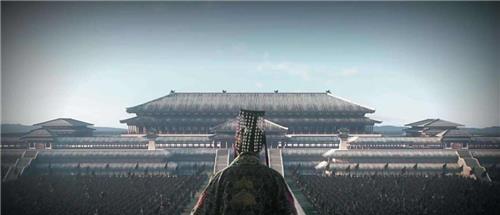In 221 BC, the Qin emperor Yingzheng swept away the Six Kingdoms and established the first unified dynasty, and began to be called "emperor". Until puyi abdicated in 1912 AD, the last feudal dynasty, the Qing Dynasty, was declared extinct. Over the course of more than 2,000 years, a total of 494 emperors have emerged. Most of them are now unknown, and only 4 of them have been praised by later generations as "the first emperor of the ages".

Qin Shi Huang won the government
Qin Shi Huang was born in 259 BC in the then city of Handan, and was the middle son of King Xiang of Qinzhuang. In 247 BC, King Xiang of Qin zhuang died, and at the age of 13, Yingzheng was made the King of Qin. However, the person in charge of the government at that time was Lü Buwei, and it was not until Qin Shi Huang held a rite of passage at the age of 21 that he ceded power to Yingzheng.
After Yingzheng came to power, a political struggle quickly broke out in the middle of the dynasty, and in 237 BC, Yingzheng relieved Lü Buwei of his position and exiled him to Bashu. After the Qing Dynasty, when the time was ripe, it was from 230 BC to 221 BC. It successively destroyed the six kingdoms of Han, Zhao, Wei, Chu, Yan, and Qi, and completed the great cause of reunification for the first time.
After Qin Shi Huang unified the world, he immediately unified the currency, weights and measures, and built "the Great Wall that snaked for more than 10,000 miles from Lintao in the west to the Liaodong in the east, and repaired the Qin Straight Road, which took more than 2,200 years." Promoting economic and cultural exchanges in various places is of great significance. It can be said that Qin Shi Huang laid the basic pattern of China's political system for more than two thousand years, and was known as an emperor throughout the ages.
Emperor Wu of han Liu Che
When people mention Emperor Wu of Han, they often refer to him as Emperor Wu of Han. His reputation is even louder than that of Liu Bang, the founding monarch of the Han Dynasty, who was born in 156 BC and was the seventh emperor of the Western Han Dynasty. He was very similar to Qin Shi Huang, and it was not until 135 BC, when Empress Dou died, that Emperor Wu of Han really came to power.
The Han Dynasty, which had undergone the rule of Wenjing, was already quite rich, and with this foundation, Emperor Wu of the Han Dynasty began to wage war against the Xiongnu after taking power. Under the command of outstanding generals such as Wei Qing and Huo Zhiyi, the Han army took Hexi and sealed the wolf Juxu Mountain to lin the Han Sea. Looking forward to the thirty-six countries in the western region. Conquer the kingdoms of Dawan. During the reign of Emperor Wudi of Han, the territory of China was almost doubled, and Emperor Wudi of Han was called "Emperor Of Eternity".
Tang Taizong Li Shimin
There have been more than 20,000 surnames in China's history today, and there have been more than 5,000 surnames in circulation. Among them, the population of the surname Li reached more than 90 million, and was once the largest surname in China. The reason why the surname Li can have today's scale is inseparable from the development of the Tang Dynasty's sub-feudal system, and the prosperity of the Tang Dynasty began with Tang Taizong Li Shimin.
Li Shimin, the second emperor of the Tang Dynasty (reigned from 626 to 649), seized power after launching the "Xuanwumen Rebellion", and officially took the throne after the abdication of Li Yuan, the emperor of Tang Gaozu. During his reign, he realized recuperation and national peace, and created the famous "Rule of Zhenguan" in history, which was praised by later generations as "the first emperor of all ages".
Qing Shengzu Kangxi
Kangxi is one of the emperors who is relatively close to us, born in 1654. He ascended the throne at the age of 8 and pro-government at the age of 14, reigning for 61 years, making him the longest reigning emperor in history. During his reign, he leveled the San Domain, and the Three Expeditions to Gardan consolidated unification. Strengthen the centralization of power politically; pay attention to recuperation and recuperation, and develop the economy. Creating a great situation of Kangqian's prosperous world, some scholars respected him as "one emperor in all eternity". However, whether Kangxi is an emperor through the ages is also the most controversial.